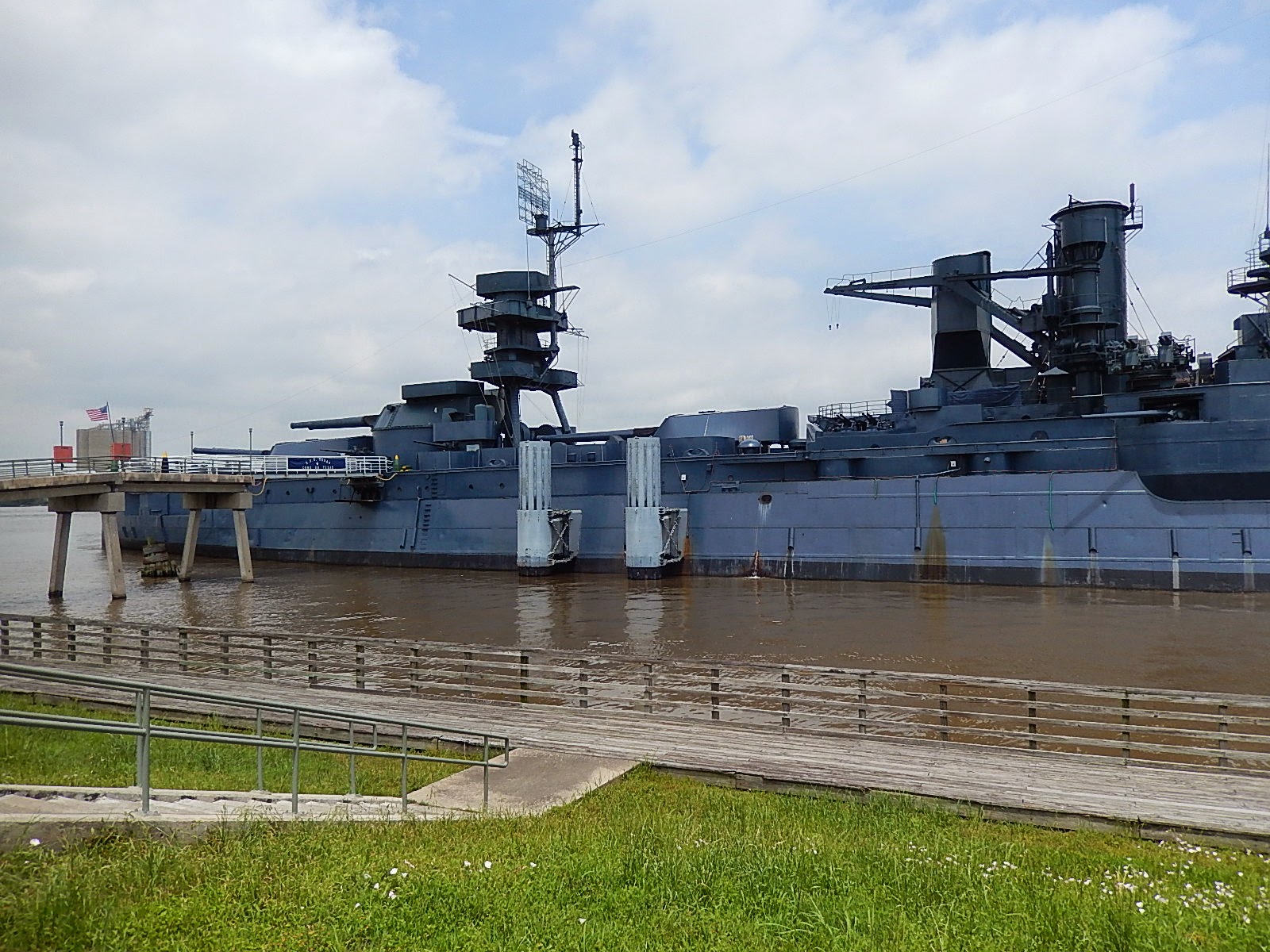For several year my wife was anxious to tour Texas, and we finally made good on the plan in April. For various reasons en route from San Antonio to Houston's Clear Lake area, we skipped a planned visit to the George H.W. Bush Presidential Library in College Station. Instead, we visited the San Jacinto battlefield east of Houston where on 21 April 1836, Texans defeated a Mexican army (for more information click here).
San Jacinto (the J is pronounced by Texans using a hard "J", not the expected Spanish "H" alternative) is not a strong attraction for most non-Texans, but I found it an interesting place.
One attraction is the San Jacinto Monument. This link states: "The monument, constructed between 1936 and 1939 and dedicated on April 21, 1939, is the world's tallest masonry column..." It is 567.31 feet (172.92 m) tall, slightly higher than the better-known 554.612-foot (169.046 m) Washington Monument in the District of Columbia. Note that construction began a century after the year of the battle.
Also on the site is the battleship USS Texas, BB-35 (Wikipedia entry here). Commissioned in 1914, it is the oldest remaining dreadnought-type American battleship; other survivors are of the World War 2 vintage "fast-battleship" type.
Below are some of my photos. Click on the images to enlarge.
There stands the monument behind our rental car. Unlike the plain, obelisk-like Washington Monument, the San Jacinto Monument has flutings like Greek columns on four of its eight faces.
Atop the monument is a four-sided Texas star.
The base, containing a museum, features inscriptions describing the battle's circumstances.
And there are very 1930s-Moderne bas-relief images with captions.
Not far away is the USS Texas. In a few years it will be placed in a dry setting (it has experienced leaks and other deterioration from time to time since it arrived at San Jacinto in 1948). Aside from the placement of the main turrets, the superstructure and armament of the Texas are drastically different from its appearance in 1914. I know it's financially impossible, but I'd love to see the Texas as it was when it was new.
Navy buffs will find the Texas interesting due to the layout of its main gun turrets. The guns are 14-inch cannons mounted in pairs. Since ten guns are carried, there are five turrets strung along the ship. This is not ideal because the third turret is placed so that its guns cannot fire fore or aft nor even nearly fore or aft, a waste of potential firepower. The strung-out turrets also require a longer swath of side armor, adding to the ship's displacement. Later battleships used three- and even four-gun turrets (Dunkerque and following French battleships).






2 comments:
The Deco low relief sculptures are gorgeous..and perfectly of their time. Do the captions tell us what the men are doing?
Hels -- The writing is a narrative rather than image captions, as best I recall. But I only glanced at the writing. No doubt the text mentioned some or all of the people depicte at some point, unless the figures were generic soldiers, etc.
Post a Comment